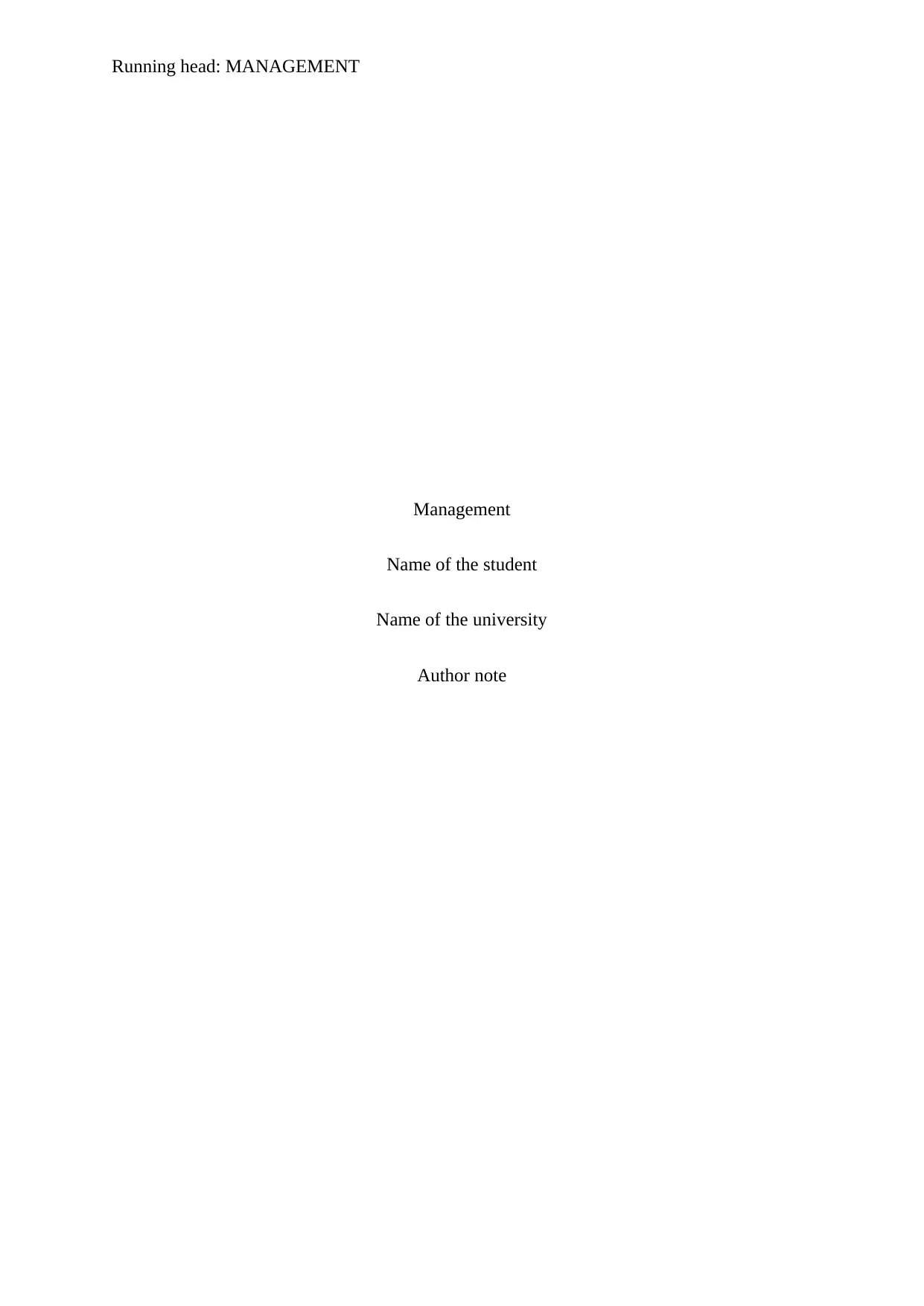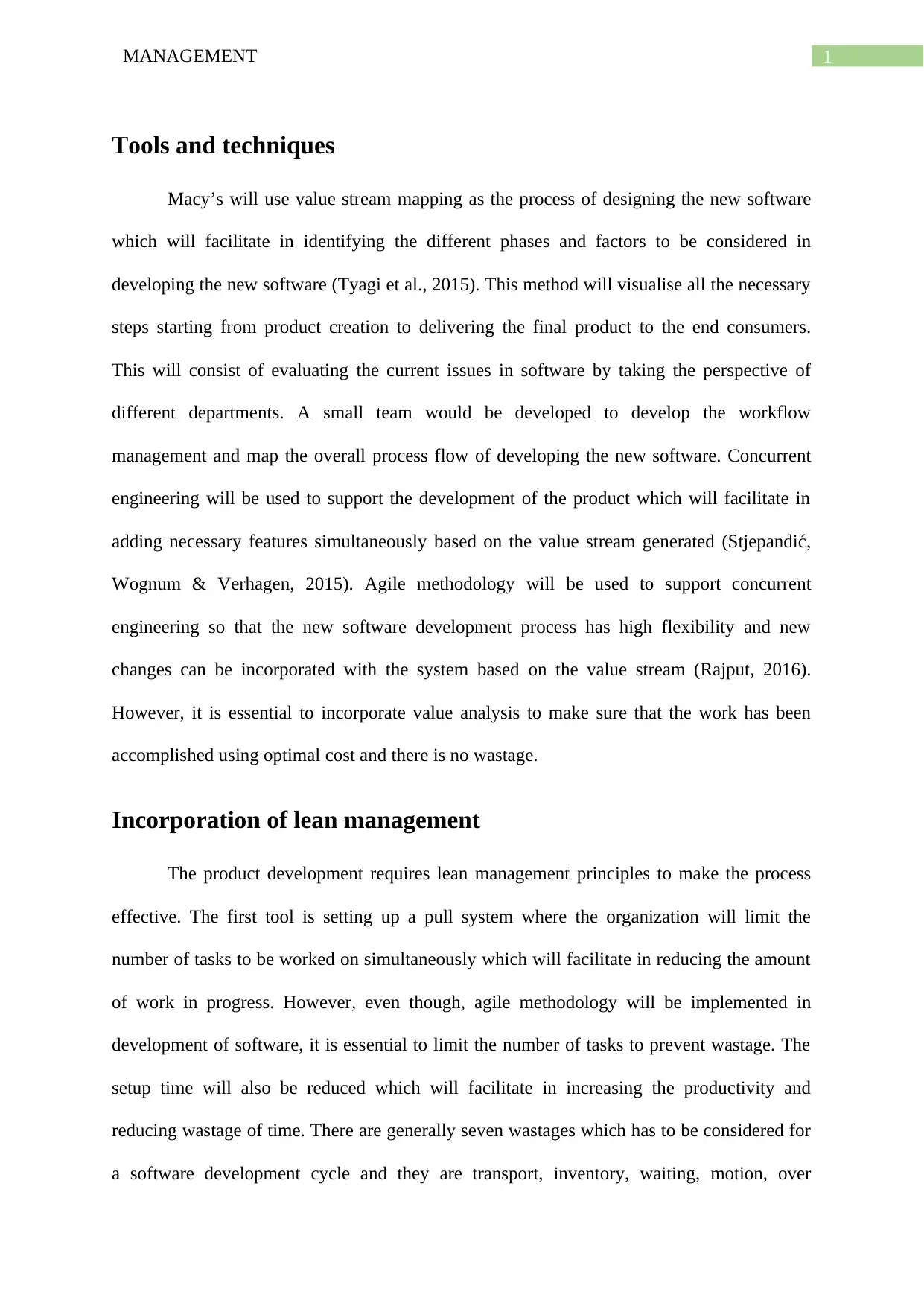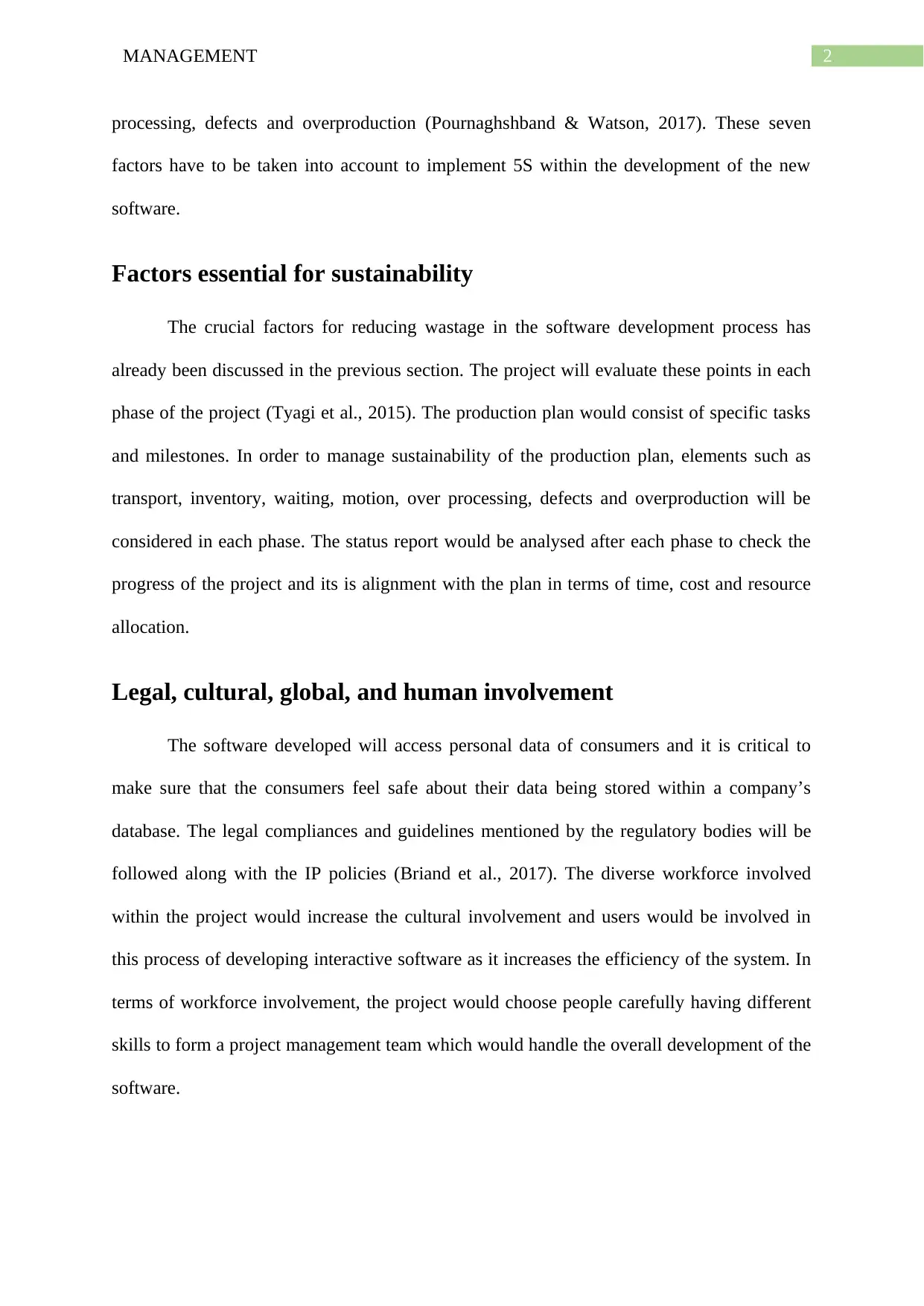MBA 690 - Production Plan: Integrating Lean Operations and Design
VerifiedAdded on 2023/04/23
|4
|842
|308
Report
AI Summary
This report details a production plan for a new business opportunity, utilizing value stream mapping and concurrent engineering supported by agile methodology. It incorporates lean management principles, focusing on minimizing waste through a pull system and reducing setup time, while addressing the seven wastages of transport, inventory, waiting, motion, over-processing, defects, and overproduction. The plan considers sustainability by evaluating these factors in each project phase and monitoring progress through status reports. Furthermore, it addresses legal compliances, IP policies, cultural involvement through a diverse workforce, and careful selection of a skilled project management team, ensuring consumer data safety and efficient system development. The document highlights the importance of integrating these elements for a successful and sustainable production process.
1 out of 4









![[object Object]](/_next/static/media/star-bottom.7253800d.svg)